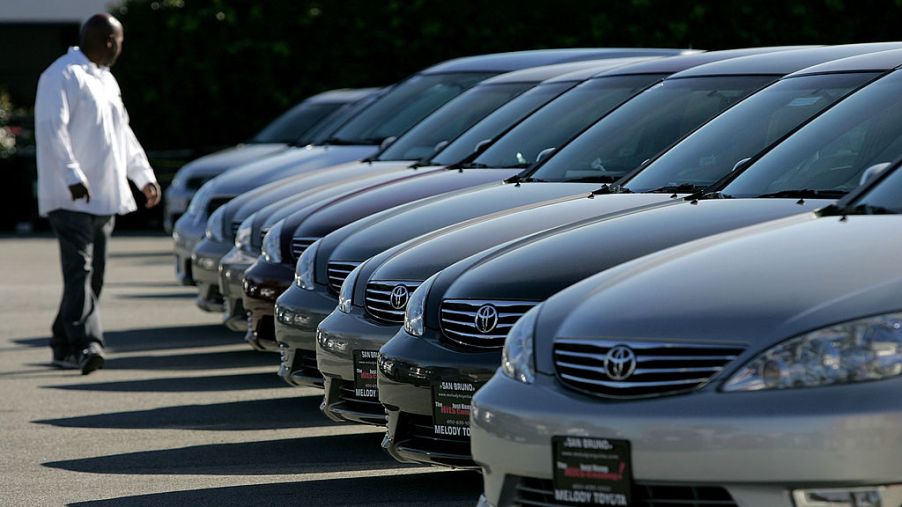
This Is What Dealerships Do With Unsold Cars and How It Can Benefit You
Your local dealerships always have row after row of shiny new vehicles on their lots. Have you ever wondered what happens to all of the cars that don’t sell? Where do these vehicles go each year when it’s time for new models to arrive?
It would be great if the dealerships gave away the cars they didn’t sell each year. But we’re here to tell you what actually happens to those cars. And if you’re looking for a new car? You’ll find out how the yearly dealer process of clearing out current models may benefit you.
The dealer’s point of view
Car dealership franchises buy cars from manufacturers and make a profit by selling them for higher prices. Once the vehicles arrive, they’re the dealer’s property until they sell to consumers. So what happens to them then? Dealers can’t return the vehicles to the manufacturers. For dealers to get their money back, they have to find a way to sell the cars.
Beyond selling to visitors online or on their lots, dealers have limited options when it comes to selling their vehicles. If another dealer in a different location has a specific need for a vehicle, they can ship it to that dealer. The company can put the car up for auction but once the auction house takes a cut, they either won’t make anything or they’ll take a loss. The dealer can also elect to keep a car or two as loaners for when clients bring vehicles in for service.
How you can benefit
When all else fails, the dealer will have to price the cars to sell before the new models arrive. In the fall, around September and October, dealers usually reduce prices to ensure current vehicles won’t compete with the new cars when they arrive. If you want to buy a new vehicle, it’s a great way to get a good deal on a current model.
The unsold cars each year can equal real savings if you have a little patience and don’t immediately need a new vehicle.
Tips for getting a great deal
Want a better deal on your next car? You know autumn can mean big savings with dealers trying to move their current inventory. Here are some other ways you can get a better deal on your next vehicle.
1. Do your homework
If you go in empty-handed, you’re a victim, not a customer. Know your facts as well as your financial situation before you go to the dealer. Edmunds, Kelley Blue Book, and the National Automobile Dealers Association are great sources of information about vehicle values.
2. When to go
The best time to schedule an appointment or drop by your dealership is a weekday. If you want to take test drives or ask several questions, but can only go on the weekend, make an appointment. Also, note the dealership’s hours. Don’t show up right before the dealership closes. The salespeople will be in a better frame of mind if they’re not trying to get home.
3. Get it in writing
Your salesperson may promise you things to get you to sign the contract. Whatever the salesperson offered that’s important to you? Get it in writing. Otherwise, you only have a verbal commitment the salesperson may claim not to remember discussing later.
4. Read the fine print
Read everything before you sign any contract. Read it again. Otherwise, you risk having extras added, like extended warranties, credit insurance, and other profit generators.
5. Get an overview of the car
If you leave the dealership with a new car, don’t drive it off the lot without having someone review how everything works. Make sure you know where the gas tank is located, how the windshield wipers work, and how to deploy the emergency brake.


